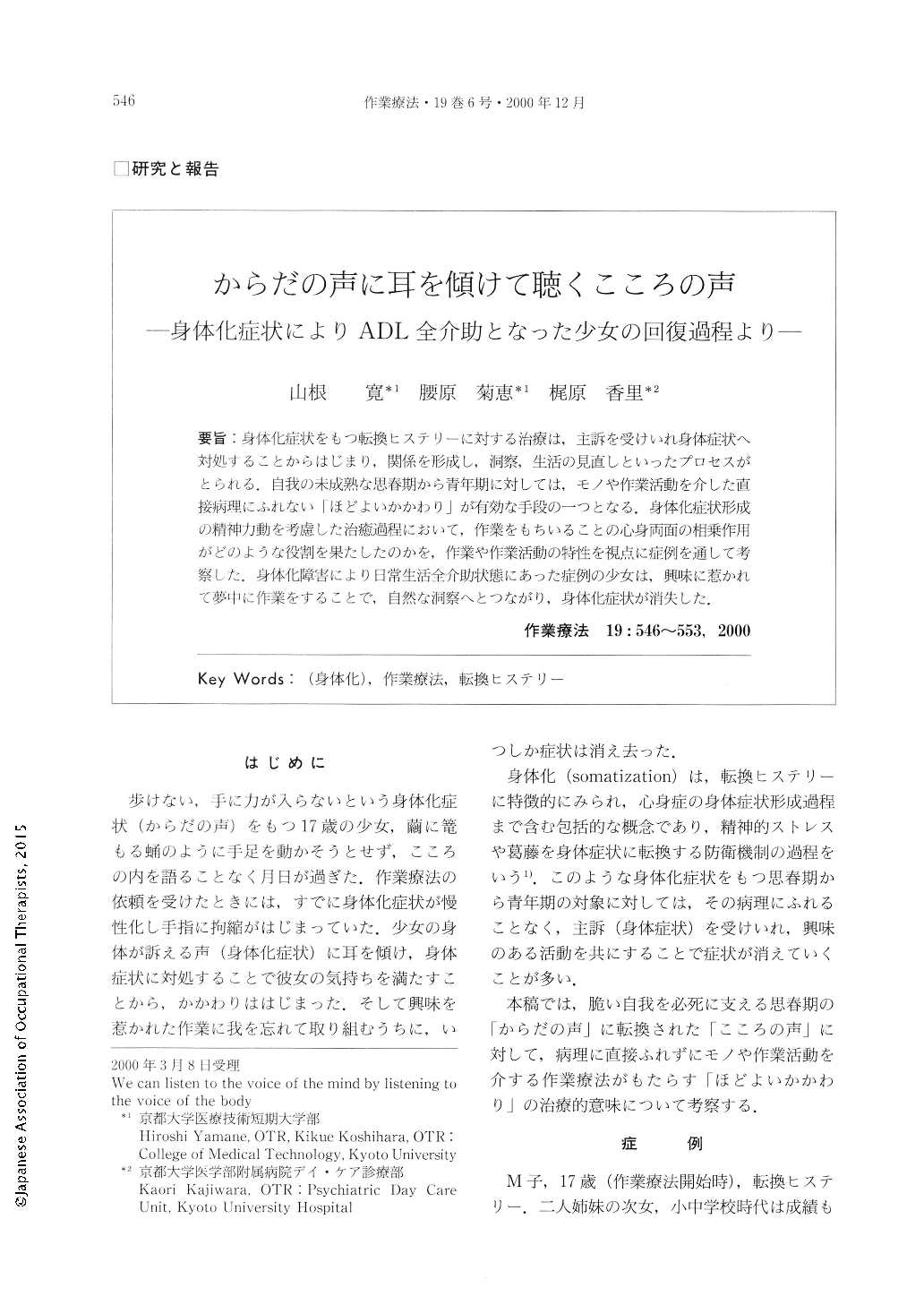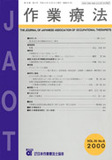Japanese
English
- 販売していません
- Abstract 文献概要
- 1ページ目 Look Inside
- 参考文献 Reference
- サイト内被引用 Cited by
要旨:身体化症状をもつ転換ヒステリーに対する治療は,主訴を受けいれ身体症状へ対処することからはじまり,関係を形成し,洞察,生活の見直しといったプロセスがとられる.自我の未成熟な思春期から青年期に対しては,モノや作業活動を介した直接病理にふれない「ほどよいかかわり」が有効な手段の一つとなる.身体化症状形成の精神力動を考慮した治癒過程において,作業をもちいることの心身両面の相乗作用がどのような役割を果たしたのかを,作業や作業活動の特性を視点に症例を通して考察した.身体化障害により日常生活全介助状態にあった症例の少女は,興味に惹かれて夢中に作業をすることで,自然な洞察へとつながり,身体化症状が消失した.
Somatization is the characteristic symptom of conversion hysteria, and is the comprehensive concept that includes even a physical symptoms formation process of psychosomatic disorders, and that is the process of defense mechanisms to convert psychological stress and conflict into physical symptoms. The medical treatment process for conversion hysteria, with such somatization disorder, begins with admitting the physical symptom, forms a relation between therapist and client, and aims at his/her insight. In that medical treatment process, the approach with objects and activities is useful for an adolescent client with an immature and fragile ego. In the healing process, considered a psychodynamics of physical symptoms formation, there are some characteristics in approaches with objects and activities as follows: i) keep a far enough mental distance so as not to invade the client indiscreetly, ii) fill the reliance need, iii) supply an opportunity to do an appropriate acting out, iv) connect the image and the real world as a transitional object and phenomenon, v) help his/her nonverbal communication. Those characteristics included in concrete activities and synergistic interaction of mind and body function as a supportive psychotherapy, and help the natural insight.

Copyright © 2000, Japanese Association of Occupational Therapists. All rights reserved.


